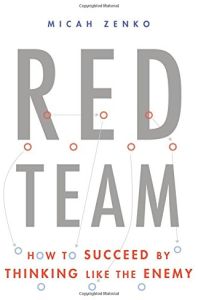Join getAbstract to access the summary!

Join getAbstract to access the summary!
Micah Zenko
Red Team
How to Succeed By Thinking Like the Enemy
Basic Books, 2015
What's inside?
To ensure your strategy works, have a contrarian “red team” expose every flaw.
Recommendation
National-security expert Micah Zenko, a senior fellow at the Council on Foreign Relations, explains that many executives can’t evaluate their own strategies and often remain blind to their competitors’ perspectives. To solve this problem, he advocates using – in military parlance – a “red team.” This panel of “devil’s advocates” tries to “think like the enemy” as it probes for weaknesses in strategy, performance and defenses. Zenko shows red teams in action during the hunt for Osama bin Laden, provides a tour of the US Army’s University of Foreign Military and Cultural Studies – nicknamed “Red Team University” – and offers advice on adapting the red-team approach to evaluating your business strategies. Even though the writing is sometimes dry, Zenko’s tales of computer hacking, counterterrorism operations and “war games” are compelling. getAbstract recommends his clear descriptions and wise suggestions to senior executives, strategists, marketing managers, information-technology specialists and security professionals.
Summary
About the Author
Council on Foreign Relations senior fellow Micah Zenko worked previously at Harvard’s Kennedy School of Government, the Brookings Institution, Congressional Research Service and the State Department's Office of Policy Planning. His national security column appears on ForeignPolicy.com; he writes for Foreign Affairs, the Washington Post and The New York Times.
















Comment on this summary